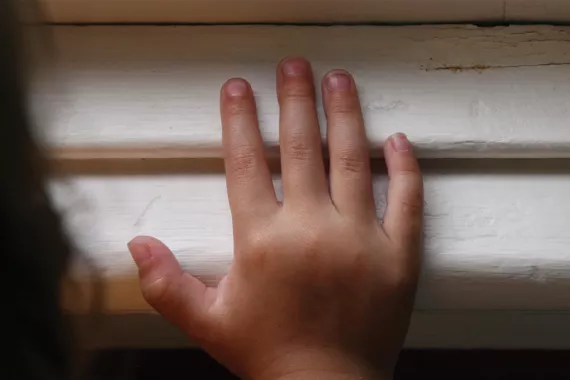
Case Overview
Lead poisoning symptoms often don’t appear until high amounts of lead are present in the blood. Children with lead poisoning can experience developmental delays and learning difficulties. Lead poisoning may go unnoticed and can be fatal.
Key takeaways about lead poisoning symptoms
- While there is no safe level of lead exposure, lead poisoning symptoms often don’t appear until dangerous amounts of lead are in the blood.
- Children are at high risk for lead poisoning. They often put lead-containing things in their mouths and are exposed to often invisible lead particles when they crawl on the floor.
- People are filing lead poisoning lawsuits on behalf of themselves and their children to collect compensation for serious health effects related to lead exposure.
What is lead poisoning?
Lead poisoning happens when lead builds up in the body over months or even years. Even small amounts of exposure can result in lead poisoning. Lead exposure is harmful to children, particularly those under the age of six. Lead poisoning can lead to severe health issues. High levels of lead exposure may result in death.
Lead poisoning is connected to adverse health conditions in children. Childhood lead poisoning can impair brain and nervous system development. Exposure to lead is connected to several serious health effects, including high blood pressure, cardiovascular issues and kidney damage.
How are people exposed to lead?
Lead exposure occurs when people:
- Breathe lead-contaminated fumes or dust
- Drink water from leaded pipes
- Ingest lead paint particles or dust that contains lead-based paint particles
- Eat food from cans made with lead
- Eat food contaminated with lead, not necessarily from packaging
Lead is hazardous to human health and no amount in the blood is considered safe.
Numerous consumer products may contain lead, such as:
- Antiques: Vintage and heirloom ceramics, dishware, lead crystal, furniture and silverware often contain lead. This is particularly true for products made before the federal ban on lead paint became effective in 1978. These items might come from antique shops, flea markets, garage sales, thrift stores, estate sales and family members.
- Baby Food: Federal agencies report that dangerous levels of arsenic, cadmium and lead have been found in processed baby food intended for children under two years of age. In 2023, the FDA announced “action levels,” or maximum content levels, for lead in baby foods in hopes to significantly reduce lead exposures from food.
- Cosmetics: Lead has been found in cosmetics and products used in religious ceremonies. The U.S. Food and Drug Administration (FDA) only regulates the color additives in cosmetics, which have contained lead. Other parts of cosmetic formulas are not regulated and may also contain lead.
- Foods: Lead is present in certain ingredients, including chili powder, tamarind and certain spices. It can contaminate imported candy that is dried, stored or ground improperly. Food stored or served in lead crystal or lead-glazed pottery can become contaminated if lead leaches from the containers. Lead has recently been found in fruit pouches for young children, likely from cinnamon.
- Jewelry: Lead is used to make jewelry heavier, brighter and more stable or pliable. Children should not wear jewelry contaminated with lead because they can suffer lead poisoning when they chew, swallow or suck on it.
- Paint: The U.S. government banned consumer use of lead-based paint over 40 years ago. However, lead-based paint can still be found in millions of houses, often underneath layers of newer paint. Lead-based paint that is chalking, chipping, cracking, damaged, damp or peeling is a hazard and should be dealt with immediately.
- Plastics: Lead is used to soften plastic, make it flexible and stabilize it from heat. However, when exposed to air, detergent or sunlight, the chemical bond between lead and plastics eventually breaks down and forms dust. When children touch plastic toys coated with this dust, they could ingest the dust if they put their fingers in their mouth.
- Toys: Imported toys not made in the U.S., Canada or the European Union may contain lead. Toys made before the 1978 U.S. ban on lead paint could be a source of lead poisoning. Older toys made from brass, tin or pewter alloys can also be a source. In 2007, Fisher-Price recalled 967,000 toys considered to be lead poisoning hazards.
Recalls have been issued for other products containing lead, including chalk, clothing, crayons and children’s products coated with lead-based paint. Other potential sources of lead include older homes and buildings, soil, yards and playgrounds, industrial waste, dust and drinking water.
People who work in certain occupations may also be more prone to contact with lead. For example, renovation workers and painters may be exposed to lead while working on older homes.
What are the symptoms of lead poisoning?
Lead exposure symptoms are often not noticeable until dangerous amounts are present. Even people who seem healthy can have high amounts of lead in their bodies. Babies and young children are more likely to be exposed to lead than older children.
The signs of lead poisoning in children include:
- Abdominal pain
- Constipation
- Developmental delays
- Fatigue
- Hearing loss
- Irritability
- Loss of appetite
- Pica (eating non-food items)
- Vomiting
- Weight loss
It is important to remember that even a comprehensive physical examination may not uncover the neurological effects associated with low-level lead exposure in children.
While there is treatment for lead poisoning, some symptoms of exposure may be permanent. The first step is to remove the source of the contamination to lessen its effects. For example, if a child was exposed to lead contaminated food, stop them from eating that food immediately. For severe cases of lead poisoning, a doctor might prescribe a treatment called chelation therapy or EDTA chelation therapy. This allows the body to excrete the lead in urine.
Ongoing health effects of lead exposure
Ongoing health effects related to lead exposure can be common depending on the amount, frequency and length of exposure. The ongoing lead poisoning effects in children may include:
- Decreased learning and memory
- Diminished verbal ability
- Early signs of ADHD or hyperactivity
- Lowered IQ
- Paralysis
- Seizures
- Speech and hearing impairment
Although children are extremely vulnerable to lead poisoning, adults are also at risk. The ongoing symptoms of lead poisoning in adults include:
- Abdominal pain
- Headache
- High blood pressure
- Joint and muscle pain
- Memory or concentration issues
- Miscarriage, stillbirth or premature birth in pregnant women
- Mood disorders
- Reduced sperm count and abnormal sperm
Children who develop lead poisoning related health conditions may have cause to file a legal claim to pursue monetary damages for their losses. Motley Rice attorneys work individually and with co-counsel to fight against childhood lead poisoning.
What do I do if I suspect lead poisoning?
If you suspect that you or someone you love is experiencing lead poisoning symptoms, seek medical care immediately. Parents who suspect that their children have been exposed to lead can speak to their child’s healthcare provider about setting up a screening to monitor lead in the blood. People whose children are experiencing dangerous health effects due to lead poisoning are filing lawsuits and pursuing legal action to recover damages.
Legal options after lead exposure
People exposed to lead poisoning who go on to develop a related condition may be eligible to pursue legal action. Many lead poisoning lawsuits have been filed, and some have reached settlements or verdicts.
Our lead poisoning and toxic exposure litigation experience
Motley Rice has tried to prevent lead poisoning from happening and has also represented people whose health has been negatively affected by various levels of exposure to lead.
Our attorneys have litigated lead poisoning cases against the lead pigment industry. For nearly two decades, Motley Rice attorneys and co-counsel have been committed to holding a number of lead pigment companies responsible for concealing the dangers of using lead pigments in paints. They also actively marketed lead paint for use in homes and around children, despite awareness of its toxicity. The companies include ConAgra Grocery Products Company, NL Industries and the Sherwin-Williams Company.
We have built longstanding relationships with lead paint researchers, scientists and doctors who support our efforts to help victims of childhood lead poisoning and avoid future harm.
Key takeaways
What is lead poisoning?
What are the symptoms of lead poisoning?
What do I do if I suspect lead poisoning?
Our lead poisoning and toxic exposure litigation experience
- Sources
- Agency for Toxic Substances and Disease Registry. Lead Toxicity. Signs and Symptoms.
- Mayo Clinic. Lead poisoning.
- National Institute of Environmental Health Sciences. Lead.
- U.S. Centers for Disease Control and Prevention. About Lead in Consumer Products.
- U.S. Centers for Disease Control and Prevention. About Lead in Foods, Cosmetics, and Medicines.
- U.S. Centers for Disease Control and Prevention. Testing for Lead Poisoning in Children.
- U.S. Environmental Protection Agency. Protect Your Family from Sources of Lead.
- World Health Organization. Lead poisoning
Start Your Motley Rice Consultation in Simple Steps
Submit Information
Call us or fill out our online form with the details of your potential case.
Case Review
Our team reviews your information to assess your potential case.
Case Consultation
Talk with us about next steps.



